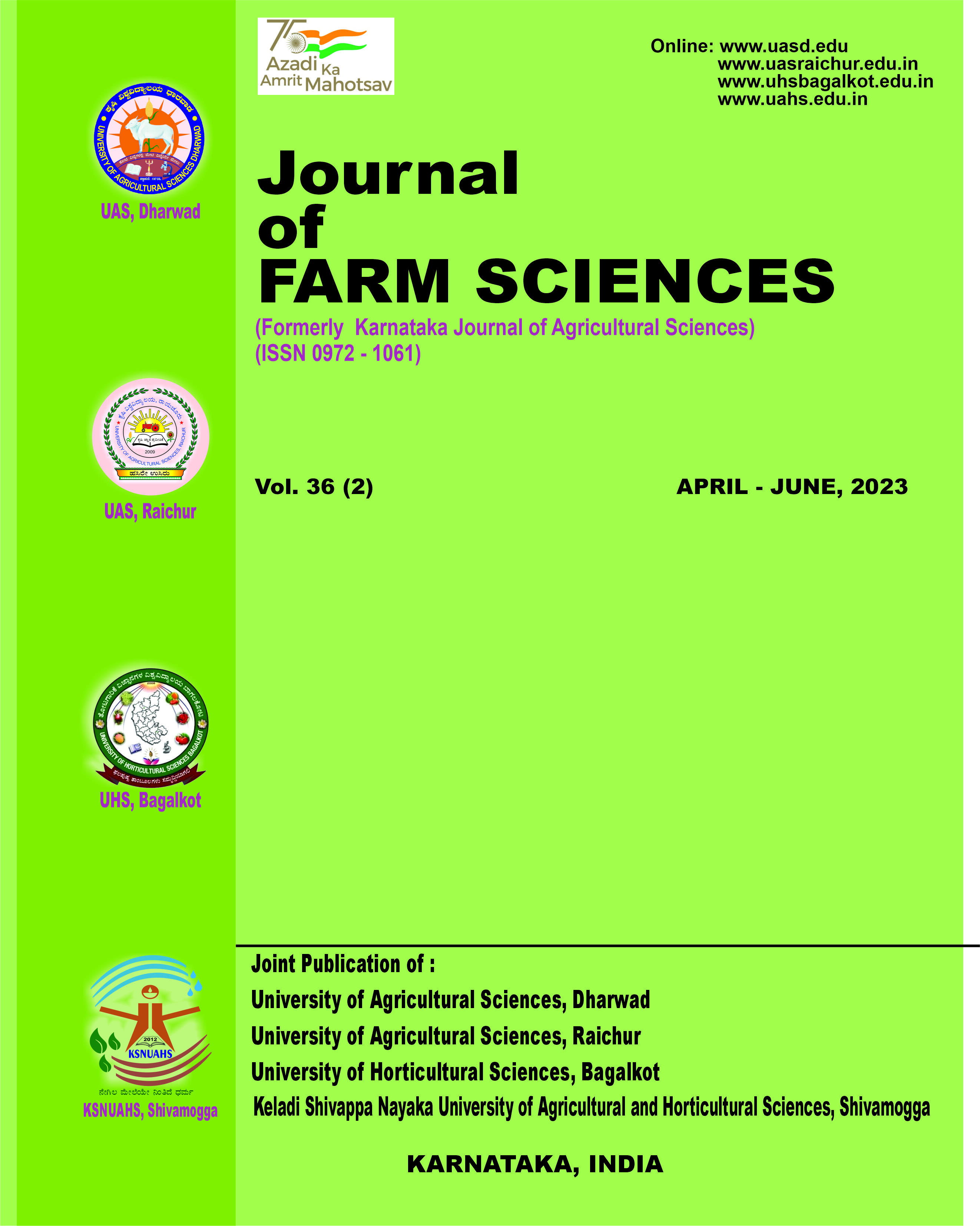Assessment of incidence of sesamum phyllodyand population dynamics of its vector in northern Karnataka
Keywords:
Incidence, Leaf hopper, Phyllody,Population dynamics, Sesamum
Abstract
The present investigation was conducted to study the incidence of sesamum phyllody disease in major sesamumgrowing areas in northern Karnataka (Vijayapur and Bagalkot districts) which revealed that the sesamum phyllody incidenceranged from 8.00 to 50.45 per cent in both the districts. Among them, Bagalkot recorded highest mean disease incidence of25.77 per cent followed by Vijayapur with mean disease incidence of 22.73 per cent. In Vijayapur district, the survey wasconducted in six taluks. Amongst the taluks, highest average per cent disease incidence was observed in Muddebihal taluk(27.54%) and least incidence was recorded in Indi taluk (16.25%). In Bagalkot district, the survey was conducted in 6taluks. Among them, the highest average per cent disease incidence was observed in Hungund taluk (31.98%) and the lowestaverage per cent disease incidence (19.91%) was recorded in Jamkhandi taluk. In order to know the population dynamics ofleaf hopper transmitting sesamum phyllody, a study was conducted at College of Agriculture Vijayapur during kharif 2021.A set of five traps were installed each week and it was repeated till the harvest of the crop. Studies on the relative abundanceof different leaf hoppers found in sesamum ecosystem revealed that Orosius albicinctus distant was the most abundantspecies found in sesamum field with the relative abundance of 64.92 per cent. The maximum population of O. albicinctusdistantwas observed during 36th and 38th standard meteorological weeks (SMWs)
Published
2023-03-20
How to Cite
BHARATHI, K., PREMA, G., & JAMADAR, M. (2023). Assessment of incidence of sesamum phyllodyand population dynamics of its vector in northern Karnataka. Journal of Farm Sciences, 36(01), 53-58. https://doi.org/10.61475/jfm.v36i01.348
Section
Research Article
Copyright (c) 2023 Journal of Farm Sciences

This work is licensed under a Creative Commons Attribution-NonCommercial-NoDerivatives 4.0 International License.


